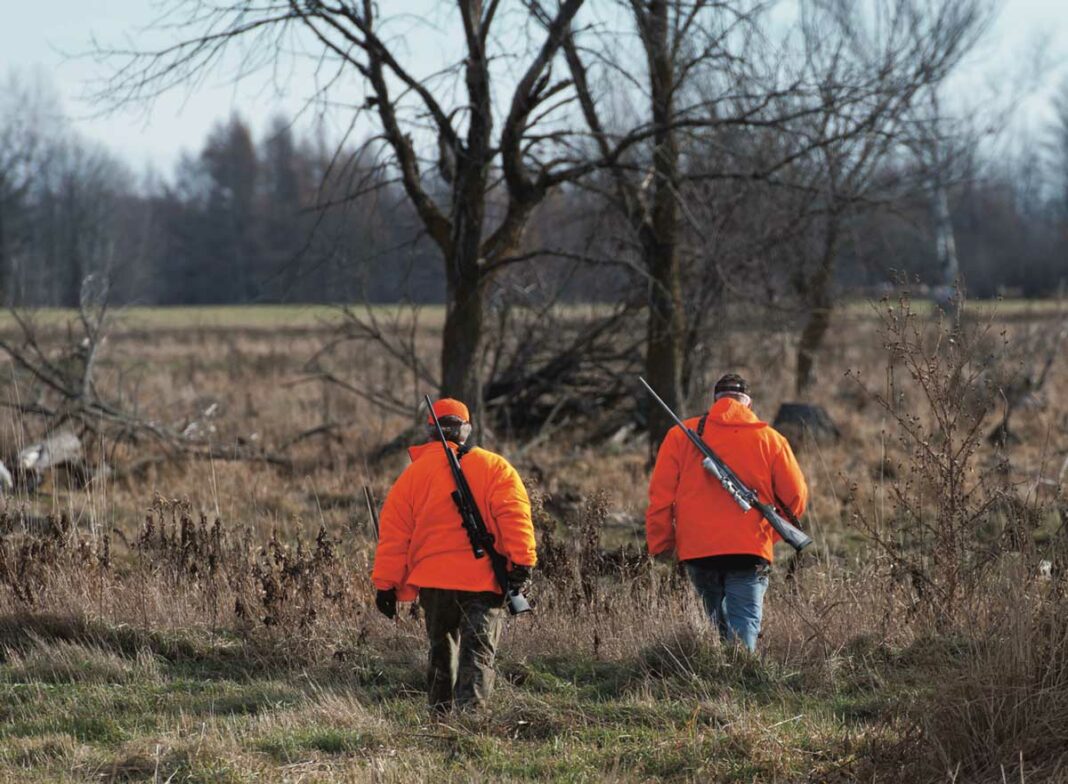MANITOULIN—Members of the Manitoulin deer management committee are supporting a recommendation to increase deer tag permits on Manitoulin Island for the 2023 hunt.
The mild winter, the number of deer harvested on the Island last fall and an increase in hunter success and deer seen per hunter day as compared to the 2022 hunt (as reported by area Ministry of Natural Resources and Forestry (MNRF) biologists), were factors in the decision made by the committee at a meeting last week.
“I can’t disagree with anything,” said Ian Anderson of Kagawong, a retired MNRF conservation officer. “As far as the winter severity, we had a lot of snow over a couple of weeks this winter, then it went. Then we had a crust on the snow you could run a truck over. This winter was in the top four or five years for the easiest winter on deer I have seen in my 50 years on the Island.”
“This was reflected in the condition of the deer I have seen (that perished) this winter,” Mr. Anderson added. “One small fawn that had been born late died while the rest of the animals I saw, about 15 to 20 (also deceased), were all in very good shape.”
Mr. Anderson agreed the hunting data presented by Denis Gendron, management biologist (acting) with the MNRF’s Sudbury work centre, reflected his own observations and he also noted there was an early green-up in mid-April on Manitoulin this year. “I think it is wise, at least for one year, to have an increase in the tags,” he said, and pointed out it could also be decreased next year.
Lee Hayden mirrored Mr. Anderson’s comments. “With the mild winter we had, the spring population looks very heavy, and the does are very heavy so we should be seeing a great fawn crop this year.”
Mr. Hayden said hunters should be harvesting more does to give the immature bucks a chance to grow.
Representing the Little Current Fish and Game Club (LCFGC) and his own hunt camp in Sandfield, Kevin Hutchinson told the meeting the deer population in Sandfield is very healthy. “In Sandfield, there are lots of deer and a variety of them. We had eight guys hunting in our camp last fall and we could have been done hunting by Thursday morning of the hunt. Five bucks, one doe and two fawns.”
“This spring we are seeing lots of deer,” he added. “When we were out driving between Little Current and Sandfield the other day, we saw 40 deer.”
Mr. Hutchinson said the LCFGC met recently and the group indicated they would like to have the tag allocation held at 4,000 this fall. Overall, the group feels the archery season is too long and would like to see that reduced by two weeks. “A lot of them are not seeing as many big bucks,” he said.
That’s a concern for Mr. Hayden. “There are a lot of avid archery hunts around,” he said. “If hunters are targeting bucks in the archery season, you are damn lucky to harvest one.” He reiterated young bucks need a chance to grow.
Mr. Hayden has a hunt camp in Ice Lake and said the area is a prime area for overpopulation of deer, adding the numbers (in Burpee) have rebounded over the last two years. “I’m happy to see the recommendation to have the deer tag quotas up this fall, and I’m thrilled to see the numbers.”
Mr. Gendron, who is also a hunter, has taken over retired MNRF biologist Wayne Selinger’s role. He acknowledged the quota recommendations had already been submitted for this fall’s hunt. “This is more or less an information session,” he said, adding he would “get this all sorted out” for next year.
The MNRF biologist explained that based on mandatory reporting data for the 2022 hunt on Manitoulin Island, an estimated 274 deer were harvested in wildlife management unit (WMU) 43A and 2,696 deer were harvested in WMU 43B. About 95 percent of hunters reported their data.
Mr. Gendron said severe winter trends in 2014 and 2018-2019 affected things quite a bit but numbers this past fall were quite positive. In 2022, hunters saw 0.93 deer per hunter day in WMU 43A and 1.28 deer in WMU 43B. Hunter success (any deer harvested) was 29 percent for WMU 43A and 43 percent for WMU 43B. For the 2022 season, 43 percent of 698 first choice applicants were successful for antlerless deer tags in WMU 43A and 71 percent of 5,364 first choice applicants were successful for antlerless deer tags in WMU 43B.
Based on the Sandfield and Walkhouse snow stations, the winter of 2023 was mild as far as snow depths go, said Mr. Gendron. “We should see a good fawn crop this spring and summer. Overall, things are looking good.”
Deer populations appear to have recovered from the severe winter of 2019 and while coyote populations did spike following that winter as a normal response to widespread deer mortality, their numbers have since declined and appear to be more in line with the Island’s longer term normal, he said.
Deer numbers on Manitoulin are now at the recent historical average for both WMUs. The harvest breakdown shows that many bucks and does have been taken. The deer tag quotas in WMU 43A were as high as 800 in 2008 but have been slowly decreasing since, with the number sitting around 300 tags since 2019. In WMU 43B, the quotas are much higher with the number of tags set at 4,000 for the past three years.
The ministry’s goal is to stabilize growth in WMU 43A for the 2023 hunt. “Originally, I was thinking of a conservative increase of 1,000,” Mr. Gendron said. “We want to stay on top of the population and not see an increase too quickly.”
The recommendation is for an increase of 150 tags for WMU 43A, to 450 this year (close to 2018 levels). The recommended increase in quota for WMU 43B is 1,500 which will bring the total tags available for WMU 43B to 5,500 for 2023.
Bryan Barker of Kagawong said he supports the mandatory reporting but questions the reported number of deer sitings. “I bow hunt from home and can see 10 come out in the afternoon,” he said, or 70 in a week. “Are there checks and balances to correct the information?” he asked. “It’s important for determining the actual deer population.”
“They are all indicators of trends,” replied Mr. Gendron. “It helps to have the historical data. With sheer numbers submitting (it) shows a good trend across the province, not just on the Island.”
Roy Polsky, Zone D representative with Ontario Federation of Anglers and Hunters said many hunters he had talked to in WMU 43A had a lot of deer sightings and a better success rate than in previous years. He also raised the concern about reducing the length of the archery season. “Do we know the harvest rate comparisons for the archery and gun hunt seasons?” he asked. “As far as the quota, I would have been good with an increase of 1,000.”
Mr. Gendron said he would ask provincial managers for some of that information. “It would help us a lot,” he said. “As for reducing the season, that’s a difficult decision. It would be good to look at the data further.”





